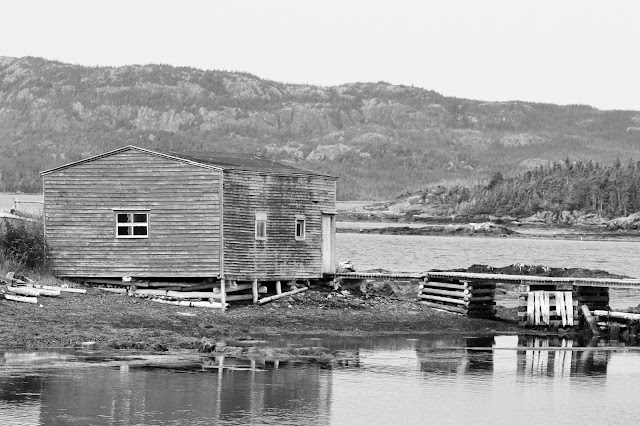Continually inhabited for 500 years, Burnside currently only has a population of about 70 people in the summer and perhaps 20 in the winter. It was ideally situated for lobstering, as well as for fishing of salmon, herring, mackerel, and squid.
Native peoples included the Beothuk, the aboriginal people of Newfoundland. Contact with European culture in the 16th century was a little different than what other natives on the mainland experienced since early Europeans were migrant fishermen who came to fish and then left, often leaving items including metal behind that the Beothuk then refashioned to increase their hunting technology.
In contrast, when the Europeans began to permanently settle the island in the 17th century the Beothuk retreated to more isolated parts of the island. By the beginning of the 19th century, the Beothuk were reduced to a small refugee population living along the Exploits River system and attempting to subsist on the inadequate resources of the interior. Although a succession of Newfoundland governors had, since the middle of the 18th century, attempted to establish friendly contact with the Beothuk, it was probably too late to change a pattern which had existed for perhaps 250 years. Shanawdithit, the last known Beothuk, died in St. John's, Newfoundland in 1829. (Thanks go out to Heritage Newfoundland for the information!)
We discovered that a ferry runs from Burnside to St. Brendan's, one of the few offshore island communities not to suffer from forced resettlement by the Canadian Government.
We thought about taking the ferry over to St. Brendan's, but it was an hour ride each way and the day was already getting away from us.
Resettlement was a program where the government tried to centralize the population in smaller outlying communities to encourage growth. From 1954 to 1975 about 300 communities and nearly 30,000 people were moved.
Originally the government would pay for the relocation of all of a families belongings as well as their house to the new community. This was changed to a cash payment of $150 per family at the start of the program and gradually increased to $600 per family by the end of the first wave of the program. This was a significant amount of money as the annual income for a fisherman working in the inshore fishery was generally under $500 per year. In order for a community to be eligible for assistance every member would have to agree to relocate. Can you imagine the tensions this created in the communities?
Both my family and Wayne's family are products of Resettlement. Wayne's comes originally from St. Leonard's (which is also their surname) and my grandmother came from the adjoining community of St. Kyran's. My grandmother and Wayne's mother are only 4 years apart in age and actually went to school together! Neither Wayne nor I have been back to see these abandoned communities though we discuss it often and hope to do so someday. It is a 4 hour boat ride out, and that is how the communities used to get their supplies and mail.
 |
| See St. Kyran's and St. Leonard's in red at thebottom left? Freshwater and Placentia in black, right center. |
There was a beautiful song written about Resettlement called "The Government Game". Go to this YouTube link to listen, it always makes me tear up.
Wayne bought some fresh salmon in Burnside to cook for his dinner, and we were very glad to have landed here by mistake.
Fishing may not be the only way of life anymore in Newfoundland, but it still has its place in the culture. We are so glad to be touring the island and connecting with our past and the current residents' present.
Hopefully we will see more small town life when we travel up to Bonavista and Elliston tomorrow, even if it rains as forecasted I'm sure we will come home with treasured memories.












Love those accidental finds. Thanks for the background information.
ReplyDeleteThis comment has been removed by a blog administrator.
ReplyDeleteI'm intrigued with the similarity of those tiny abandoned villages in Newfoundland and the tiny coastal villages in Scotland that disappeared in the Clearances.
ReplyDeleteFascinating post, Pam. I hope you guys can go back someday, and "see your roots." Burnside looks delightful. Thanks for sharing.
ReplyDeleteReally looking forward to your posts from Terra Nova. It was on my itinerary for the ill fated trip to Newfoundland. A town with only 20 people in winter and 70 in summer. I don’t think I’ve ever been anywhere so small. Thanks for showing it to me. I’d like to go to Burnside. So small sounds wonderful. Very sad about the Beothuk. It seems the Native peoples never fared well after the invasions. I’d never heard of relocation. Very interesting but that seems sad too. I wonder how they finally got everyone to agree and if those folks feel now it was a good thing for them or if they wish the government had left them alone. Really interesting and informative post Pam. Hope you’ll get to go to St. Brendan's. I enjoyed the map which gave me an excellent picture of what you are talking about. Thanks for it all.
ReplyDelete